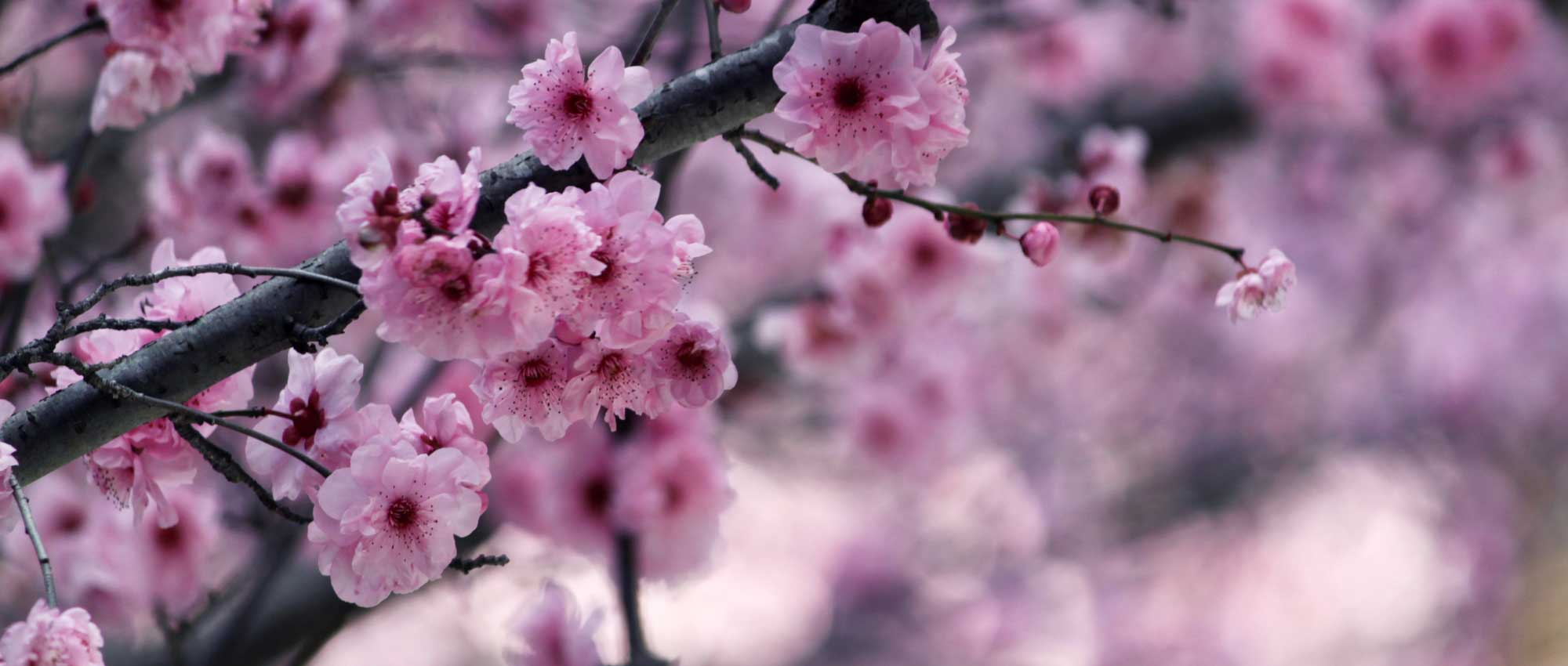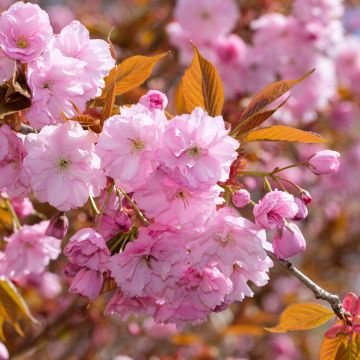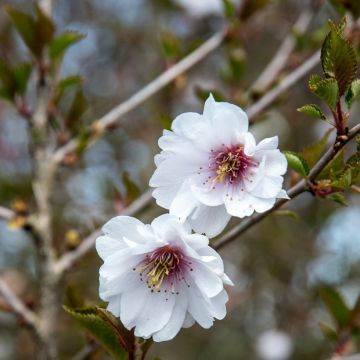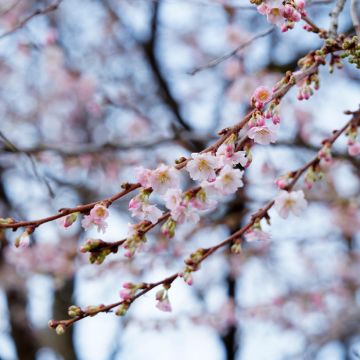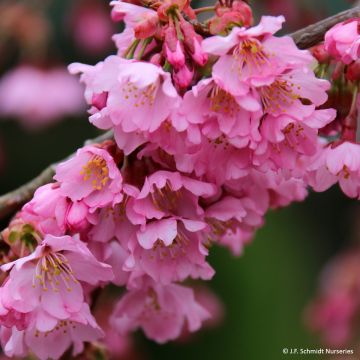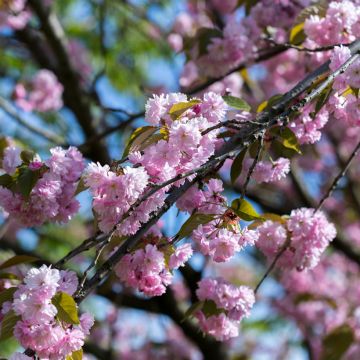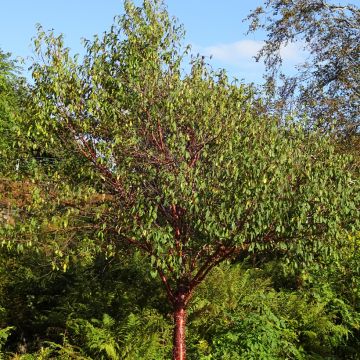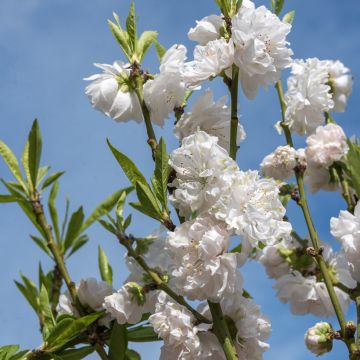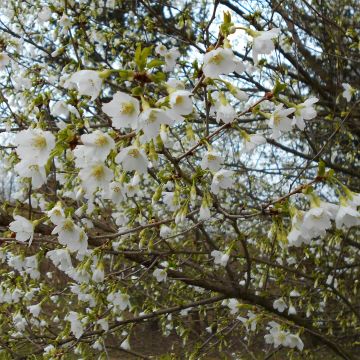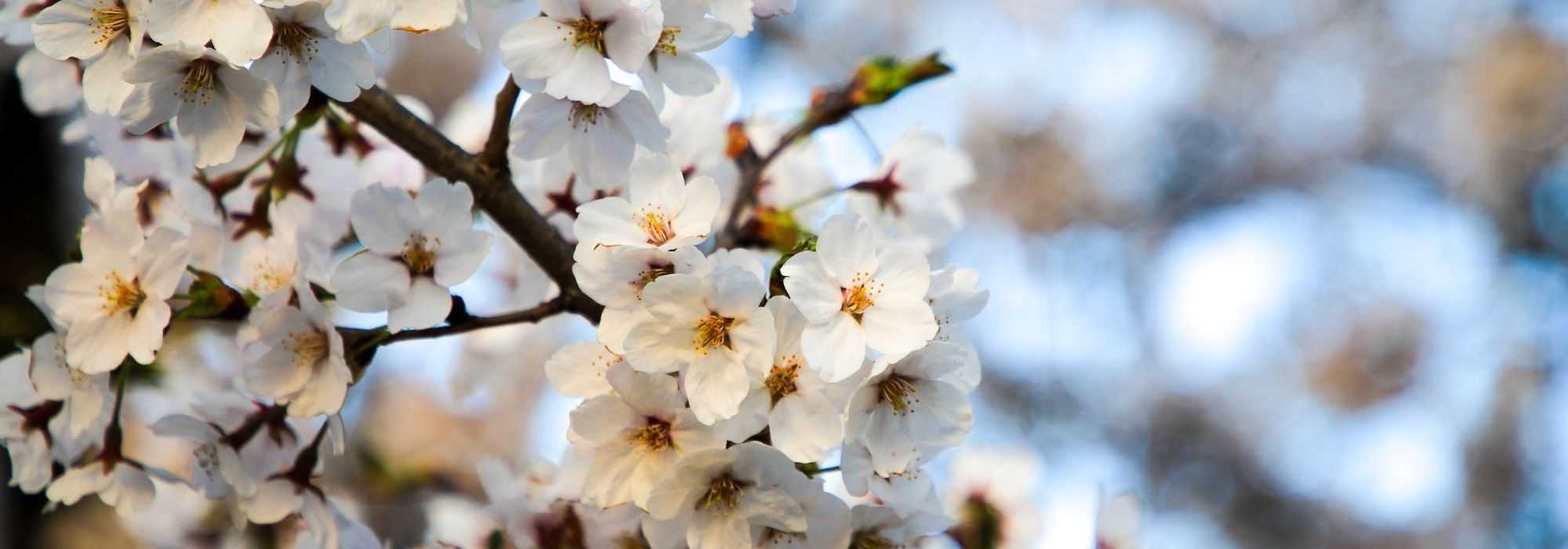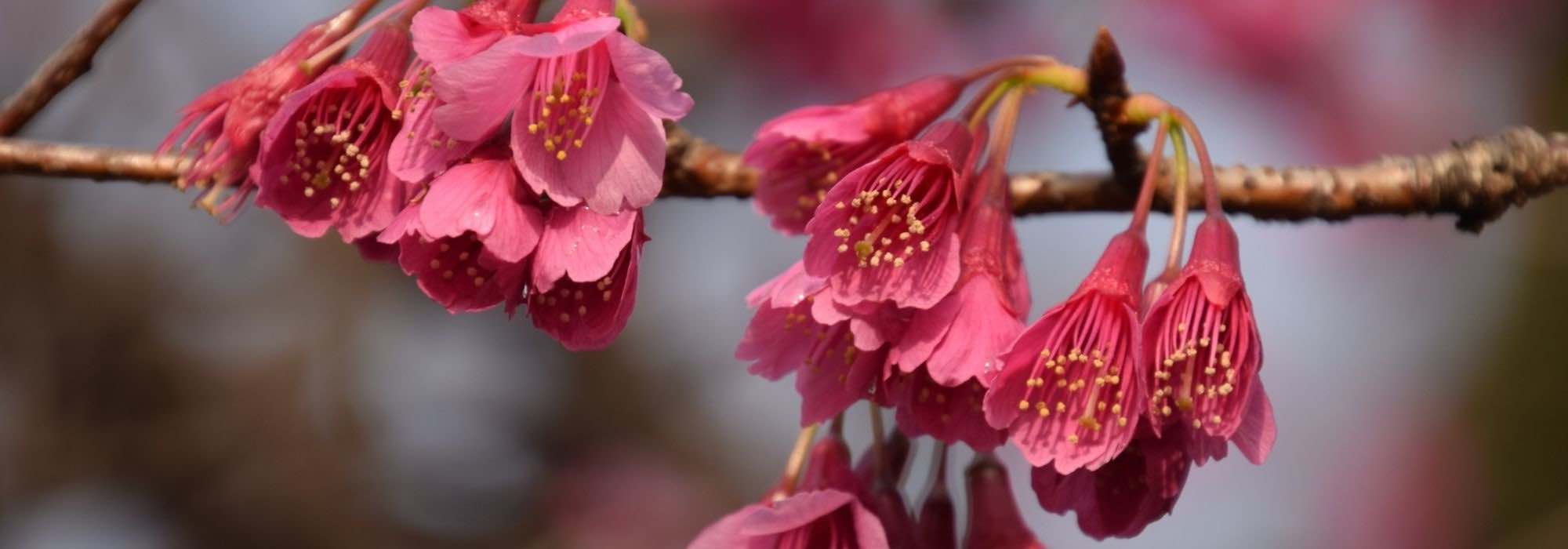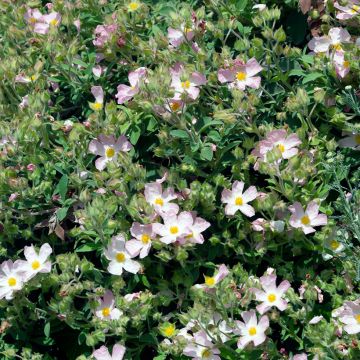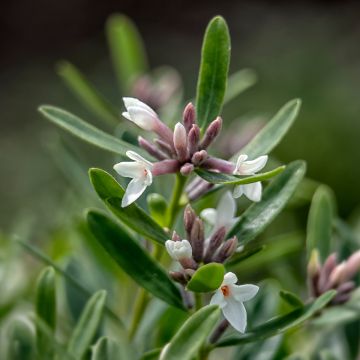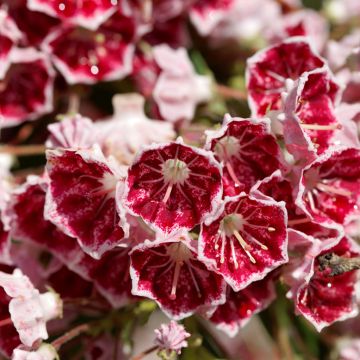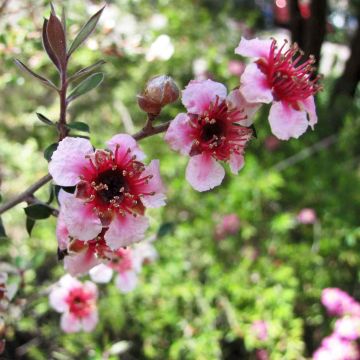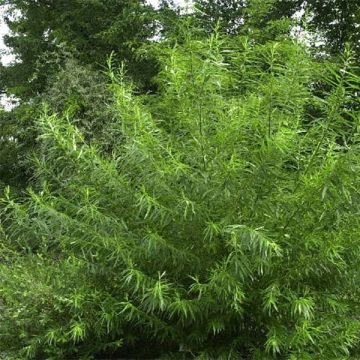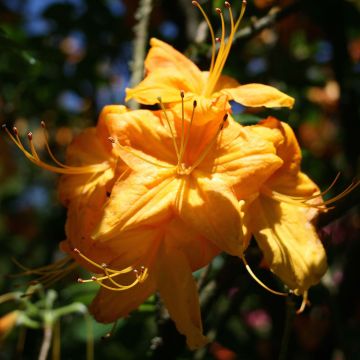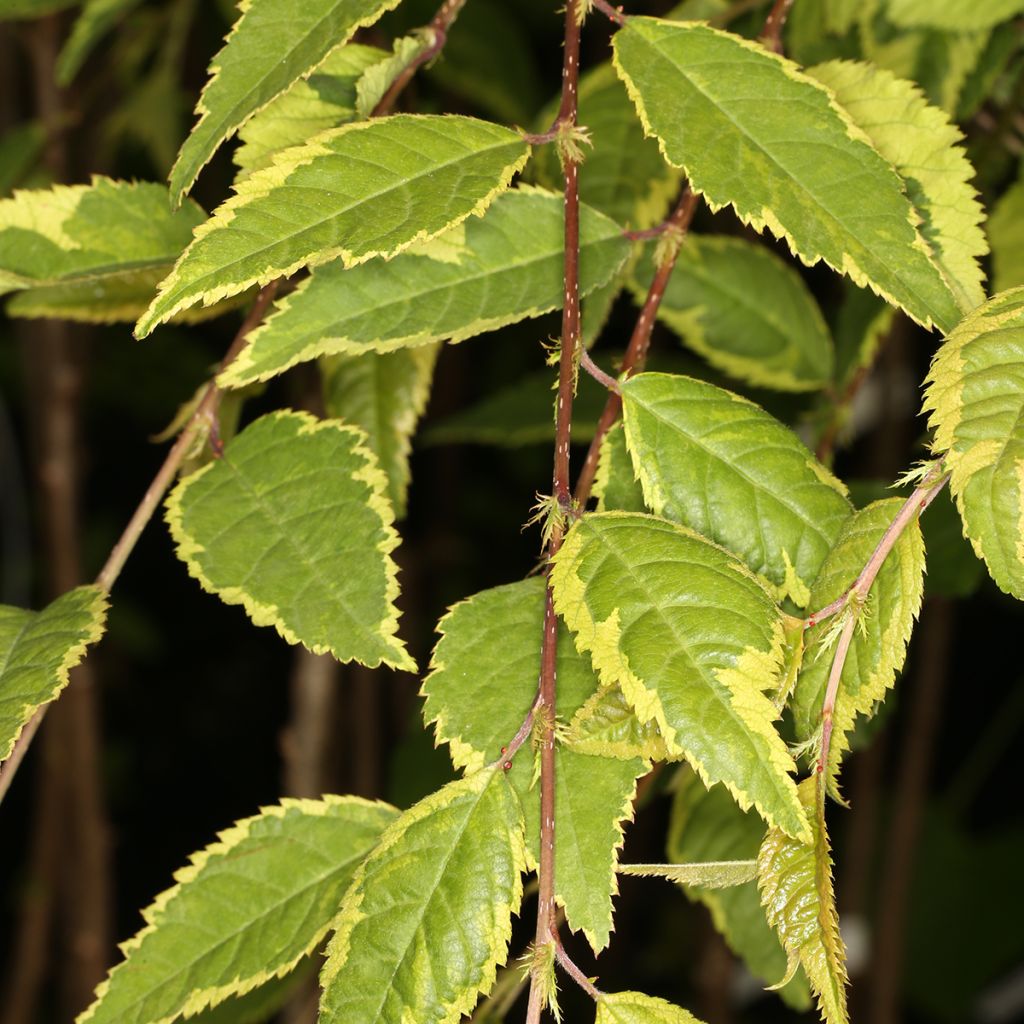

Prunus Frilly Frock
Prunus Frilly Frock
Prunus incisa Frilly Frock® 'Mattrilly'
Fuji Cherry
Special offer!
Receive a €20 voucher for any order over €90 (excluding delivery costs, credit notes, and plastic-free options)!
1- Add your favorite plants to your cart.
2- Once you have reached €90, confirm your order (you can even choose the delivery date!).
3- As soon as your order is shipped, you will receive an email containing your voucher code, valid for 3 months (90 days).
Your voucher is unique and can only be used once, for any order with a minimum value of €20, excluding delivery costs.
Can be combined with other current offers, non-divisible and non-refundable.
Home or relay delivery (depending on size and destination)
Schedule delivery date,
and select date in basket
This plant carries a 24 months recovery warranty
More information
We guarantee the quality of our plants for a full growing cycle, and will replace at our expense any plant that fails to recover under normal climatic and planting conditions.
Would this plant suit my garden?
Set up your Plantfit profile →
Description
Prunus Frilly Frock is a variety of Japanese Flowering Cherry with many attributes. Its relatively narrow weeping habit and compact size allow for it to be cultivated in small gardens, and even in containers. It is adorned with beautiful white flowers from April onwards, as the young foliage emerges. This foliage, variegated with yellow, is decorative throughout the growing season and offers a festival of colours in autumn, turning orange and red before falling to the ground. This small, hardy tree grows in full sun, in most ordinary soils, and requires virtually no maintenance.
Prunus incisa, a Japanese Flowering Cherry with smaller dimensions than other species, is a very hardy tree belonging to the large Rosaceae family, which includes nearly 5000 wild, ornamental, and fruit species. In its natural habitat, this tree grows wild on the slopes of Mount Fuji in Japan. The cultivar 'Frilly Frock' is credited to the British breeder Frank P Matthews, who was particularly attracted to its small weeping habit. This miniature tree, with branches arching towards the ground, develops a narrow dome of 2m to 2.50m in height and 1.50m to 1.80m in width only. It develops very dense foliage that covers the branches from top to bottom, giving it an attractive architectural appearance in the garden. The elongated elliptical leaves with pointed tips are finely toothed and measure an average of 4 to 6 cm in length. They are a tender green when the plant buds, and display a superb yellow variegation. The central part of the leaf is a medium green, with slightly irregular contours, while a light yellow margin extends around the entire edge, creating a superb contrast.
From April, more or less at the same time as the leaves appear, a multitude of pink buds appear and open into small white flowers with a very slight pink hue. Carried on long peduncles and arranged on a red calyx that pleasantly contrasts with the white corolla, these small flowers, 2 to 3 cm in diameter, also have a weeping habit and sway lazily in the breeze. This flowering attracts pollinating insects that allow the flowers to transform into small reddish cherries, sought after by birds but not edible for humans.
The deciduous foliage takes on beautiful red-orange colourations in autumn, with the green turning crimson and the yellow margin becoming a pinkish orange, creating a beautiful spectacle at the onset of winter.
Very hardy and resistant to temperatures as low as -20°C, this small tree doesn't mind the cold, although its early flowering may suffer from late frosts. It should be planted in a sunny location, sheltered from cold winter winds, in preferably moist, neutral to moderately alkaline soil (it also tolerates slightly acidic soils). It is ornamental from April to October and its compact size allows for container cultivation to enhance a terrace.
With its graceful weeping habit, this small tree will find its place even in the most demanding gardens. Decorative throughout the growing season, its silhouette is also interesting in winter, after the leaves have fallen. It can be planted as a solitary specimen on a lawn or integrated into a diverse flower or foliage bed. Physocarpus opulifolius Little Devil, a low shrub with beautifully cut purple foliage, will create a strong contrast with the yellow variegation of the Prunus, while its white flowering will take over from the Prunus. Another compact shrub, Caryopteris Grand Bleu, with narrow silver-grey foliage, will bring a new shade to your scene, and its dark blue spikes from August to October will greatly extend the flowering period. And to enjoy it in winter as well, nothing beats a Hellebore ericsmithii, a perennial ground cover with persistent dark green foliage that will reward you with beautiful single white-pink flowers from January to April...
Prunus Frilly Frock in pictures
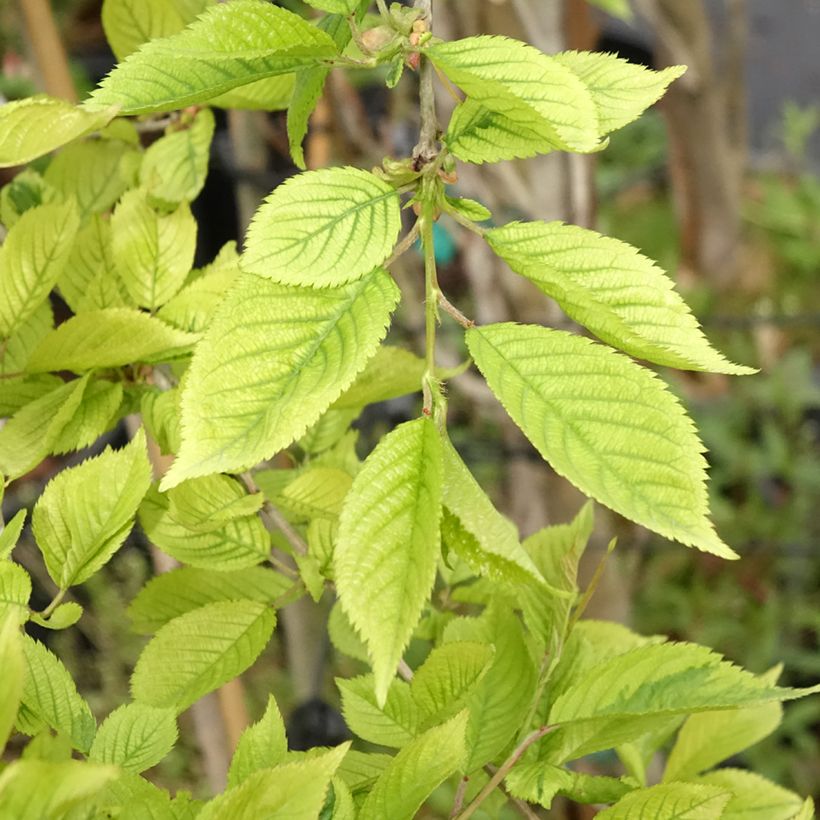

Plant habit
Flowering
Foliage
Botanical data
Prunus
incisa
Frilly Frock® 'Mattrilly'
Rosaceae
Fuji Cherry
Cultivar or hybrid
Other Prunus
View all →Planting and care
Prunus Frilly Frock thrives in full sun in any soil that is rich enough and moist while being well-drained, with a neutral to moderately alkaline pH, or even slightly acidic. It is important to avoid excessively wet or excessively dry soils. Before planting, soak the root ball in a bucket for fifteen minutes to ensure it is well saturated. Dig a hole that is 50 to 60 cm wide and deep, and mix your soil with planting compost at a ratio of 50%. Position the root ball, backfill around it, and water abundantly. Every spring, apply a flowering shrub fertiliser that is higher in potash (the K in the N.P.K balance) than in nitrogen (the N). Water regularly for the first two years, and then during hot weather. Be careful of late frosts that could damage the early flowering. It is preferable to place the Prunus in a location that is sheltered from dry and cold winds.
Planting period
Intended location
Care
Planting & care advice
This item has not been reviewed yet - be the first to leave a review about it.
Similar products
Haven't found what you were looking for?
Hardiness is the lowest winter temperature a plant can endure without suffering serious damage or even dying. However, hardiness is affected by location (a sheltered area, such as a patio), protection (winter cover) and soil type (hardiness is improved by well-drained soil).

Photo Sharing Terms & Conditions
In order to encourage gardeners to interact and share their experiences, Promesse de fleurs offers various media enabling content to be uploaded onto its Site - in particular via the ‘Photo sharing’ module.
The User agrees to refrain from:
- Posting any content that is illegal, prejudicial, insulting, racist, inciteful to hatred, revisionist, contrary to public decency, that infringes on privacy or on the privacy rights of third parties, in particular the publicity rights of persons and goods, intellectual property rights, or the right to privacy.
- Submitting content on behalf of a third party;
- Impersonate the identity of a third party and/or publish any personal information about a third party;
In general, the User undertakes to refrain from any unethical behaviour.
All Content (in particular text, comments, files, images, photos, videos, creative works, etc.), which may be subject to property or intellectual property rights, image or other private rights, shall remain the property of the User, subject to the limited rights granted by the terms of the licence granted by Promesse de fleurs as stated below. Users are at liberty to publish or not to publish such Content on the Site, notably via the ‘Photo Sharing’ facility, and accept that this Content shall be made public and freely accessible, notably on the Internet.
Users further acknowledge, undertake to have ,and guarantee that they hold all necessary rights and permissions to publish such material on the Site, in particular with regard to the legislation in force pertaining to any privacy, property, intellectual property, image, or contractual rights, or rights of any other nature. By publishing such Content on the Site, Users acknowledge accepting full liability as publishers of the Content within the meaning of the law, and grant Promesse de fleurs, free of charge, an inclusive, worldwide licence for the said Content for the entire duration of its publication, including all reproduction, representation, up/downloading, displaying, performing, transmission, and storage rights.
Users also grant permission for their name to be linked to the Content and accept that this link may not always be made available.
By engaging in posting material, Users consent to their Content becoming automatically accessible on the Internet, in particular on other sites and/or blogs and/or web pages of the Promesse de fleurs site, including in particular social pages and the Promesse de fleurs catalogue.
Users may secure the removal of entrusted content free of charge by issuing a simple request via our contact form.
The flowering period indicated on our website applies to countries and regions located in USDA zone 8 (France, the United Kingdom, Ireland, the Netherlands, etc.)
It will vary according to where you live:
- In zones 9 to 10 (Italy, Spain, Greece, etc.), flowering will occur about 2 to 4 weeks earlier.
- In zones 6 to 7 (Germany, Poland, Slovenia, and lower mountainous regions), flowering will be delayed by 2 to 3 weeks.
- In zone 5 (Central Europe, Scandinavia), blooming will be delayed by 3 to 5 weeks.
In temperate climates, pruning of spring-flowering shrubs (forsythia, spireas, etc.) should be done just after flowering.
Pruning of summer-flowering shrubs (Indian Lilac, Perovskia, etc.) can be done in winter or spring.
In cold regions as well as with frost-sensitive plants, avoid pruning too early when severe frosts may still occur.
The planting period indicated on our website applies to countries and regions located in USDA zone 8 (France, United Kingdom, Ireland, Netherlands).
It will vary according to where you live:
- In Mediterranean zones (Marseille, Madrid, Milan, etc.), autumn and winter are the best planting periods.
- In continental zones (Strasbourg, Munich, Vienna, etc.), delay planting by 2 to 3 weeks in spring and bring it forward by 2 to 4 weeks in autumn.
- In mountainous regions (the Alps, Pyrenees, Carpathians, etc.), it is best to plant in late spring (May-June) or late summer (August-September).
The harvesting period indicated on our website applies to countries and regions in USDA zone 8 (France, England, Ireland, the Netherlands).
In colder areas (Scandinavia, Poland, Austria...) fruit and vegetable harvests are likely to be delayed by 3-4 weeks.
In warmer areas (Italy, Spain, Greece, etc.), harvesting will probably take place earlier, depending on weather conditions.
The sowing periods indicated on our website apply to countries and regions within USDA Zone 8 (France, UK, Ireland, Netherlands).
In colder areas (Scandinavia, Poland, Austria...), delay any outdoor sowing by 3-4 weeks, or sow under glass.
In warmer climes (Italy, Spain, Greece, etc.), bring outdoor sowing forward by a few weeks.






























